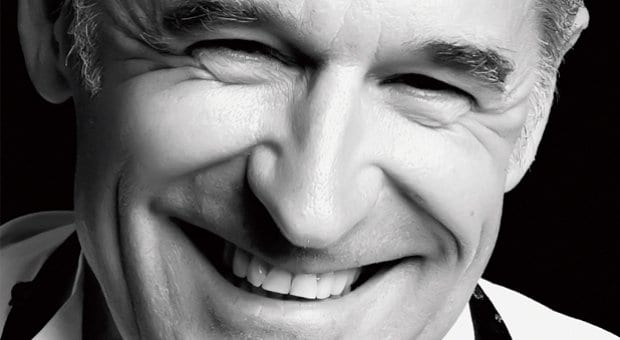Despite setting up as a downward-spiral narrative, Andrew Binks’s second novel, Strip, is actually more an optimistic coming-of-age story that walks a fuzzy line between memoir and fiction.
“It’s certainly not an autobiography, because my life wouldn’t have been that interesting in the space of one year,” the Ottawa native laughs. “At one point I was definitely extremely naive and lost. Writing this book meant plumbing the depths of certain decisions I’d made. There were days I was working on this when I looked back at my life and wondered what the hell I was doing and why I made certain bad decisions.”
The book opens with his wide-eyed protagonist, John, naked in a stairwell. The 20-something ex–ballet dancer now working as a stripper has escaped a violent trick clothed only in a bed sheet. Forced to confront his situation, he makes a mental survey of the last year of his life, pondering exactly how it came to this.
“John isn’t self-destructive as much as a naive dreamer who gets himself into bad situations,” Binks says. “There’s a lot of life he hasn’t lived, so he doesn’t always make the best decisions. But he’s also very lucky in certain circumstances. At one point, he calls himself the poster boy for dreams come true.”
While successfully climbing the ranks of a Western Canadian ballet company, John falls for a Montreal choreographer, abruptly quits his job and heads for La Belle Ville in search of true love. When both the relationship and his dance career quickly fizzle, he finds himself hard up for cash and takes a job stripping, a narrative that loosely parallels Binks’s own life. After attending the Royal Winnipeg Ballet School, the Ottawa native bought a one-way ticket for Montreal, hoping to launch his dance career. But when things failed to spark, he took a job at the eccentric suburban Quebec City strip club Le Folichon (rechristened Chez Moritz in the book).
Though it continues to thrive in different form, the Le Folichon of the early 1980s was a kind of club that no longer exists, a transition point between the burlesque theatres of old and the flesh palaces of today. Performances included a feathers-and-sequins show along with conventional stripping and table dances. The clientele was divided equally between men and women, who often came as couples, and the club featured both male and female dancers.
When Binks was first hired, he thought he could just put his dance training to use in the Vegas-style show, but he was quickly informed he’d have to bare all if he wanted to keep working.
“Of course I was nervous, but part of me was very intrigued by the idea of stripping,” he says. “There was this voice inside that said, Someday it will make a good story, even though it took me a long time to write about it.”
Despite working in the sex business, Binks — and his character — maintained a certain naiveté about sex.
“Growing up, my only reference point for being gay was the dirty old men that wanted to fondle children my parents warned me about,” he says. “I avoided sex for a long time because of that. I wasn’t going to clubs, doing poppers, all the stuff that was a part of sex culture at the time. When I finally started to accept myself as gay, I was dreaming of sex and love together, which meant finding a monogamous partnership.”
His relationship with sexuality during that period also reflects in the book’s treatment of AIDS. Like any gay narrative set in the 1980s, the disease looms in the background, though less overtly than in most writing about the time.
“AIDS felt like something happening in New York City more than something happening around me,” Binks says. “I wasn’t a very social person, so I didn’t have as much of a community to be destroyed. I felt like more of an observer than a participant.”
He pauses, tearing up. “At the same time, I regret not being there as much as I could have been, knowing how quickly people were going to die. But I was so tied up in my own drama at that point, I’ve had to forgive myself for a lot of what happened.”
Translating painful experiences to art requires a certain distance, something Binks has found two decades later, living comfortably in rural Prince Edward County with his partner of 14 years and their poodle, Hugo.
“There’s a kind of nostalgia that happens in my writing when remembering a place or situation,” he says. “It’s more about how I would have liked things to be than how they actually were.”
Strip, by Andrew Binks
Reading and Ottawa launch party
Thurs, Nov 14, 6–8pm
After Stonewall, 370 Bank St
andrewbinks.ca


 Why you can trust Xtra
Why you can trust Xtra


